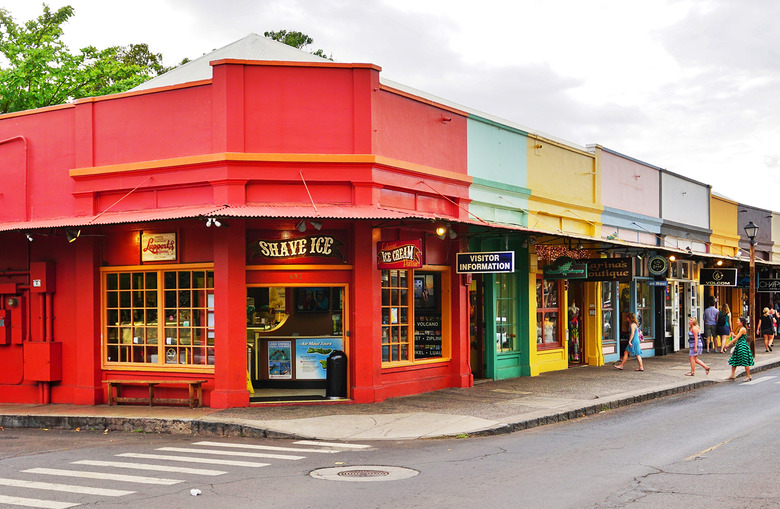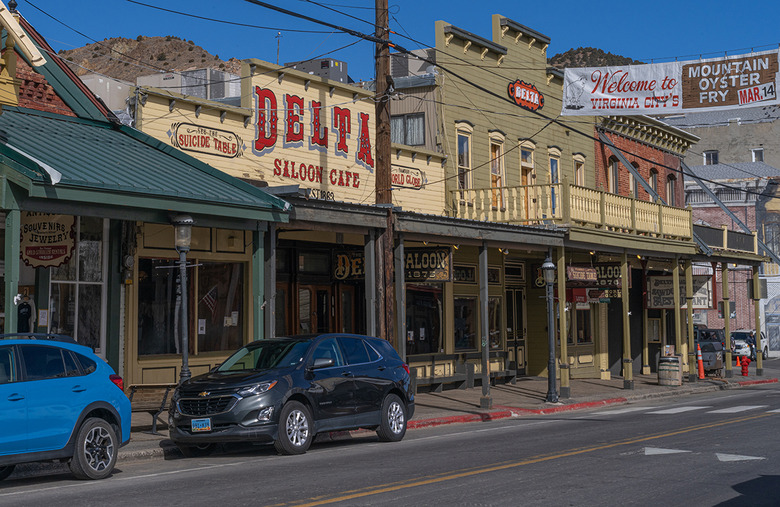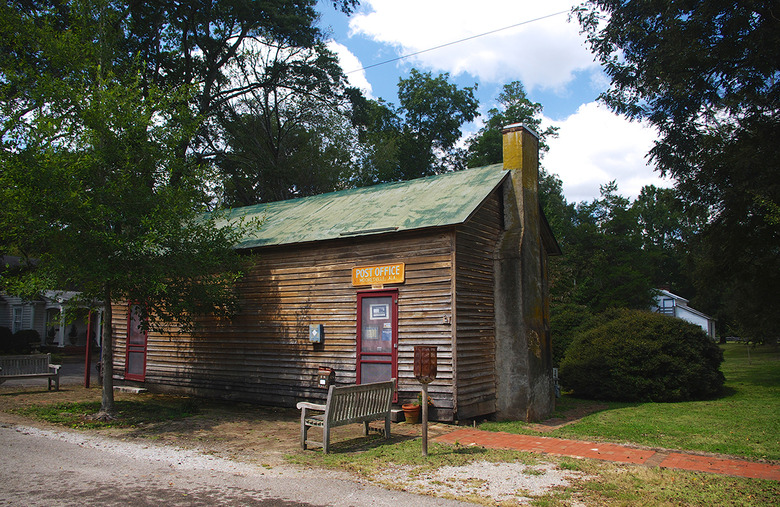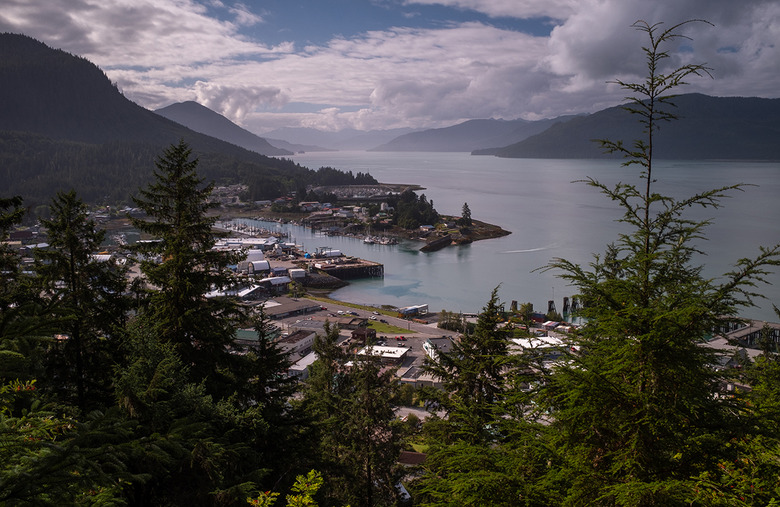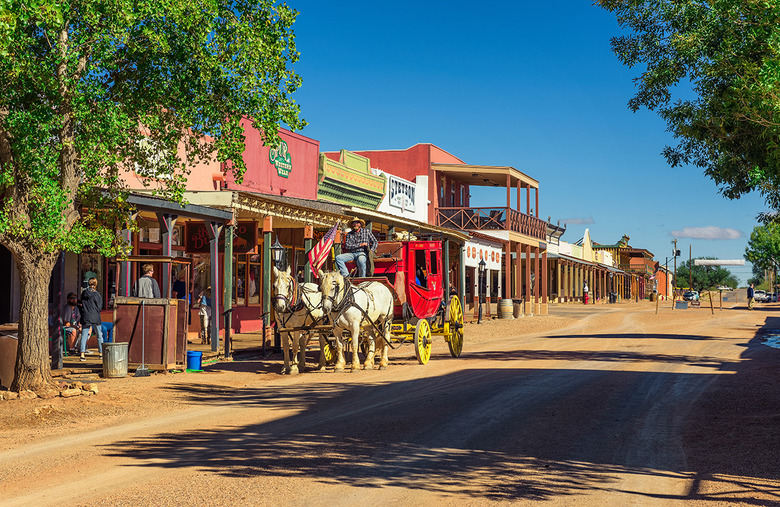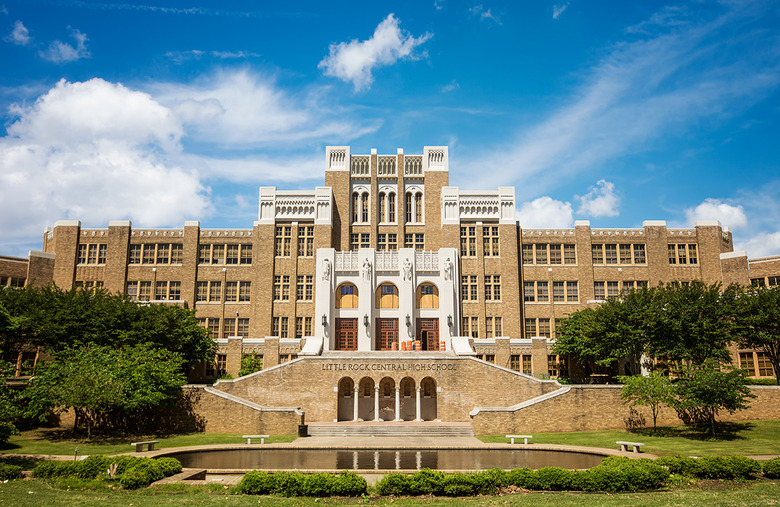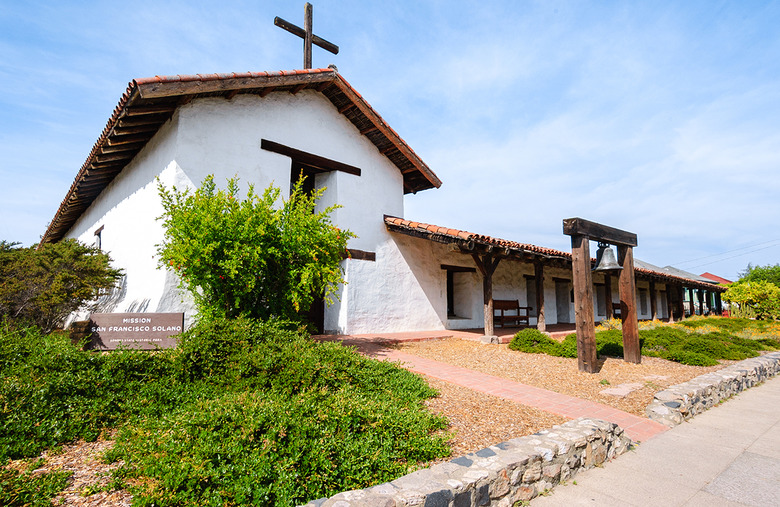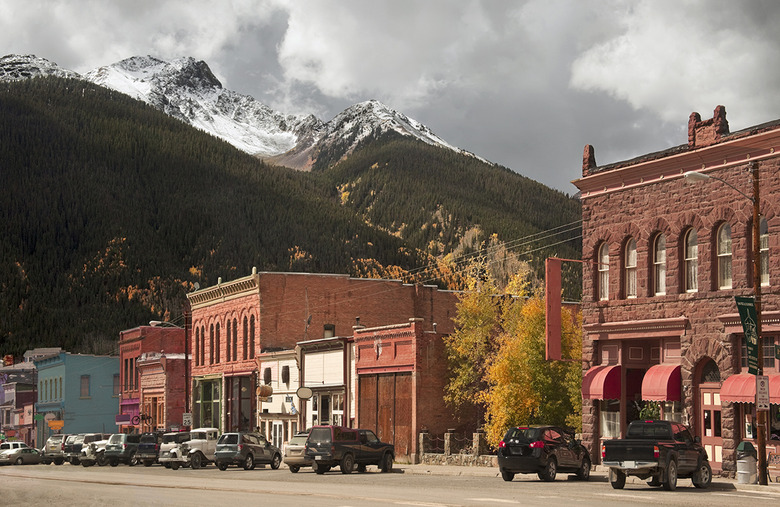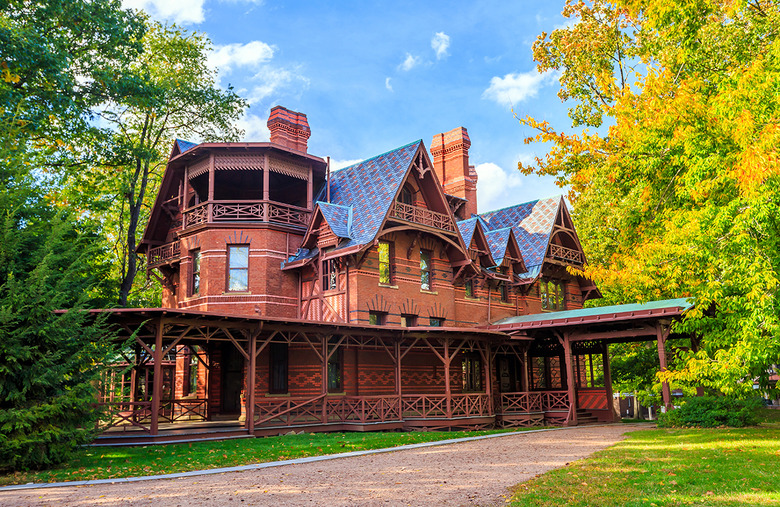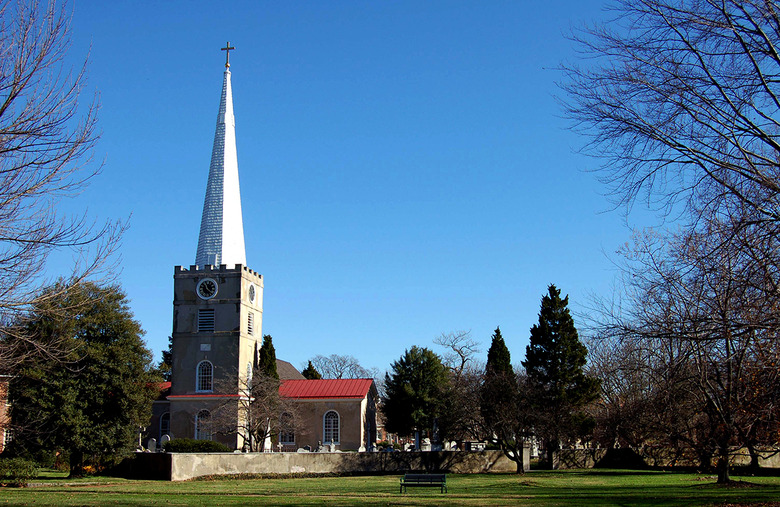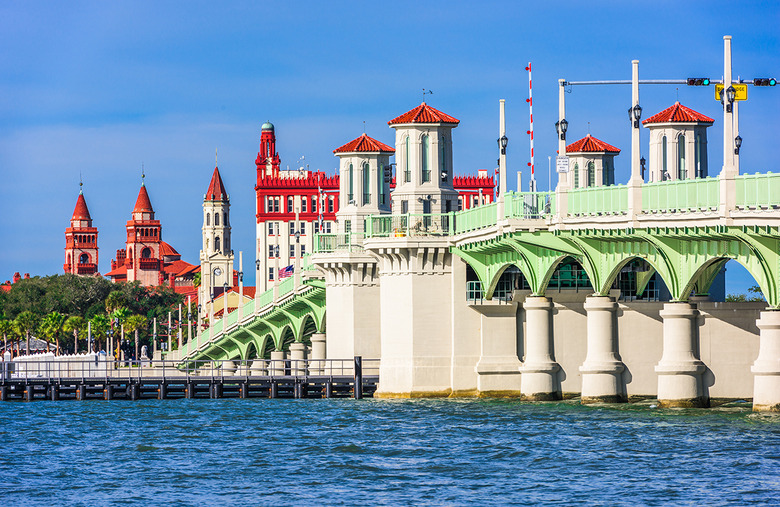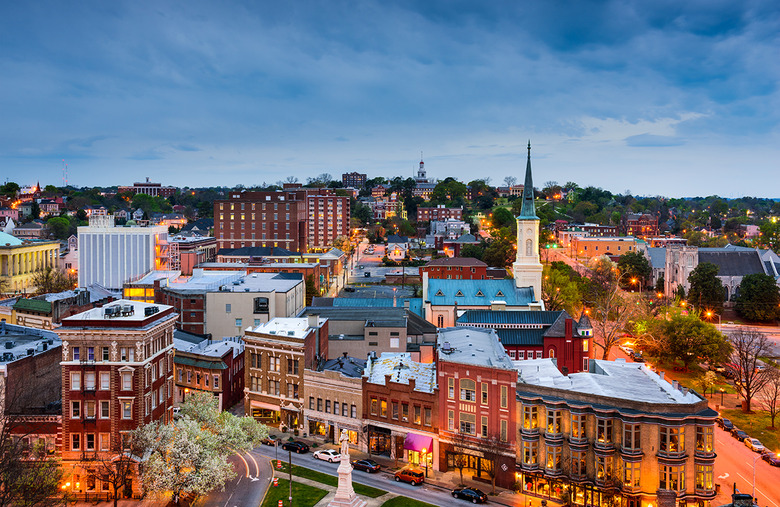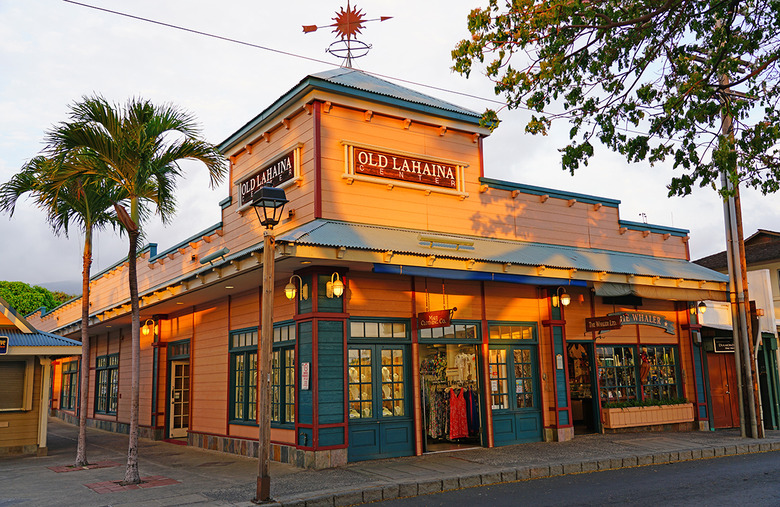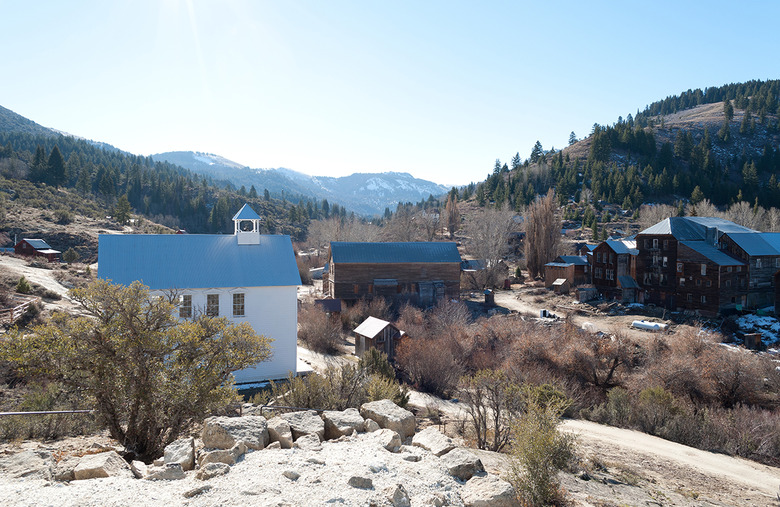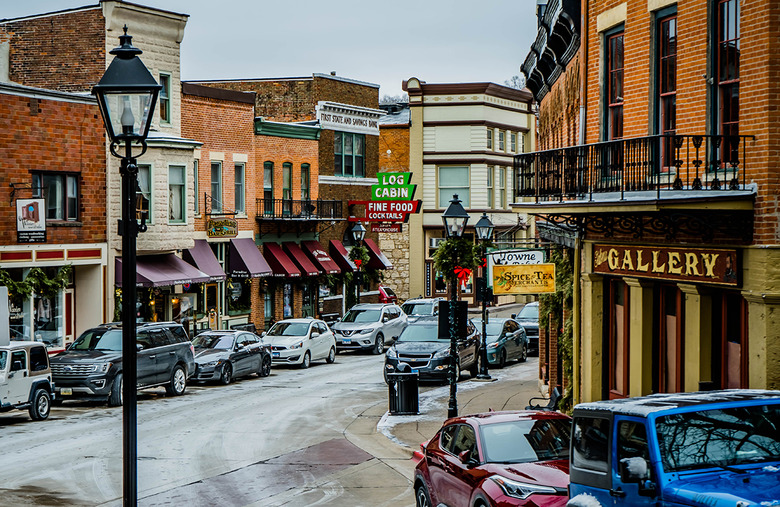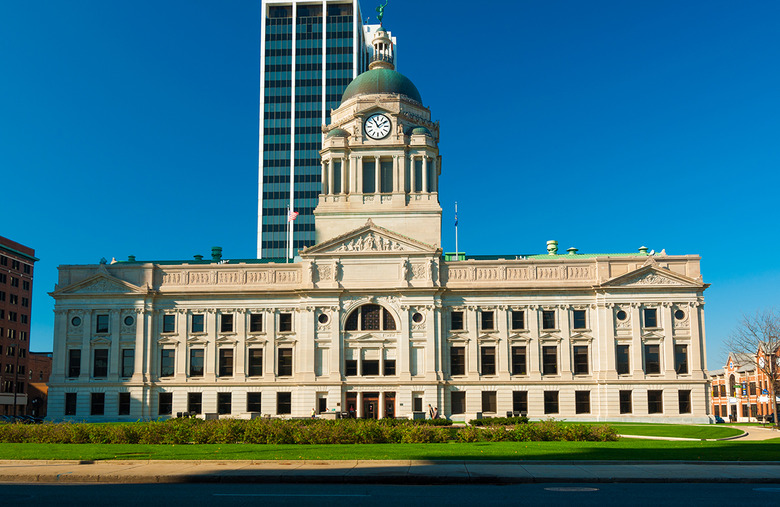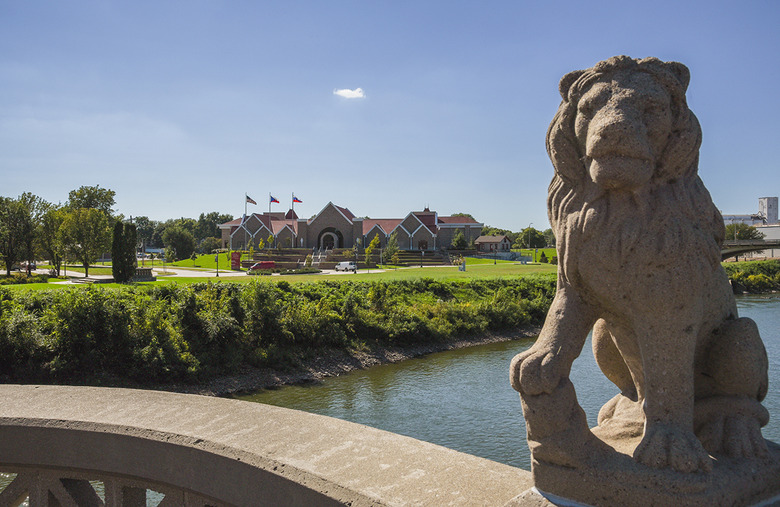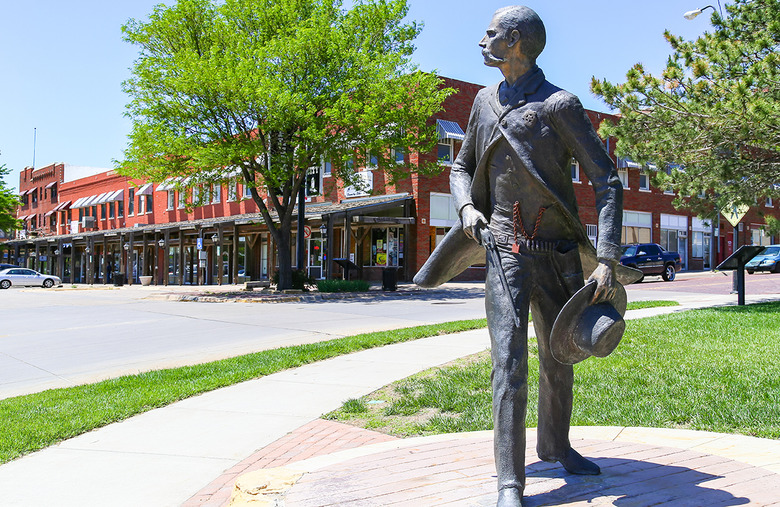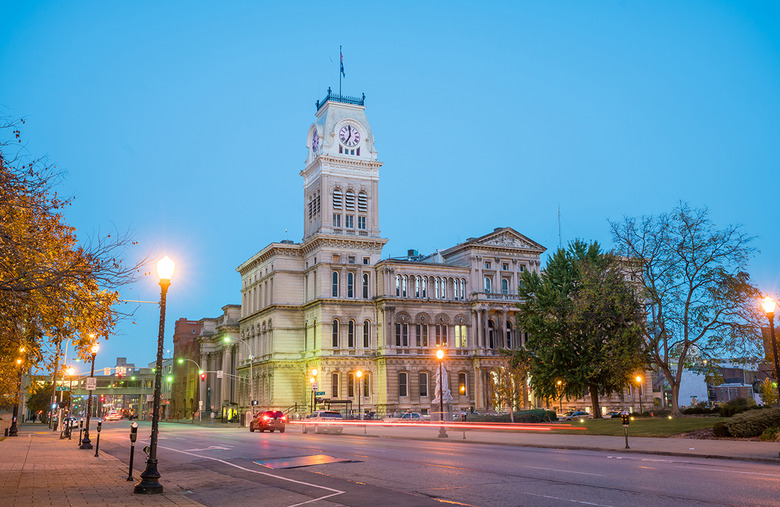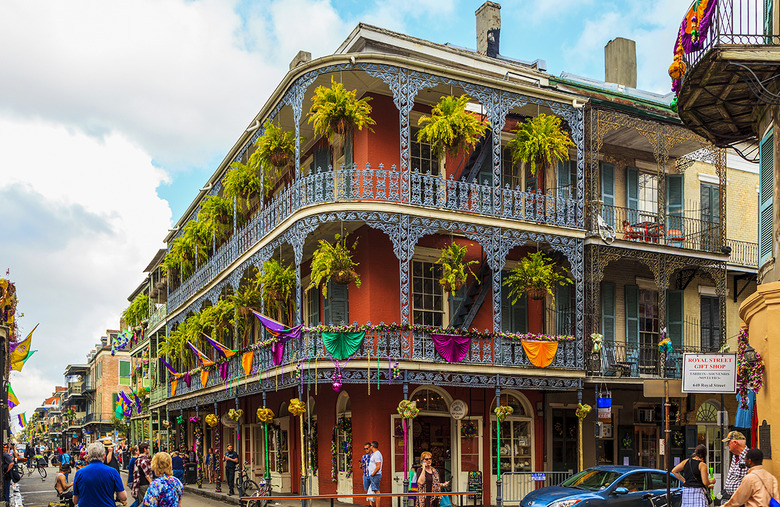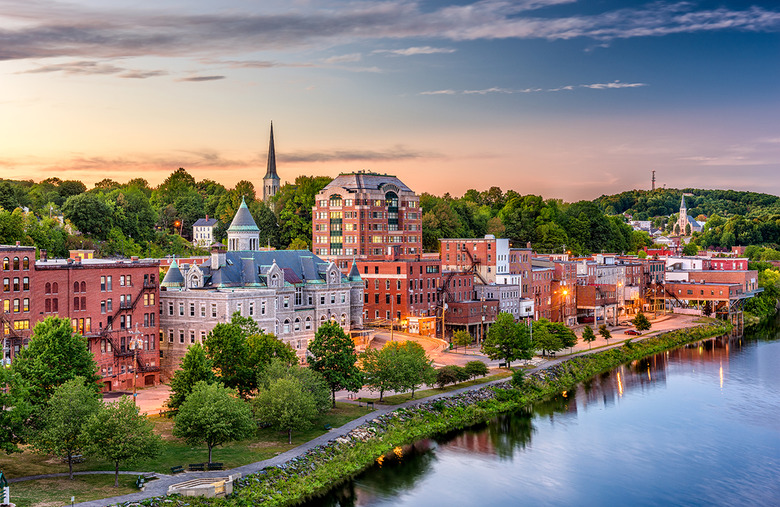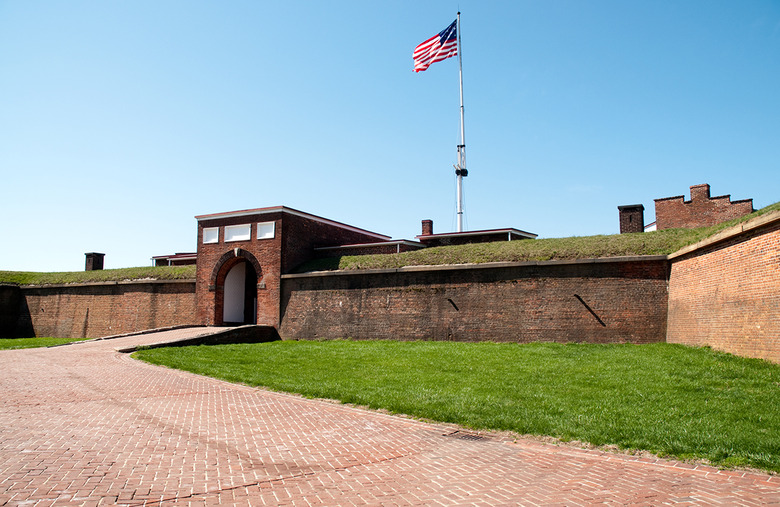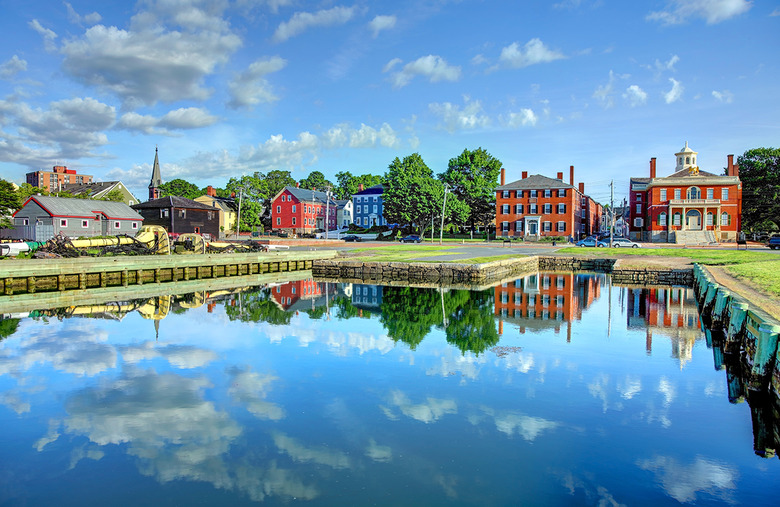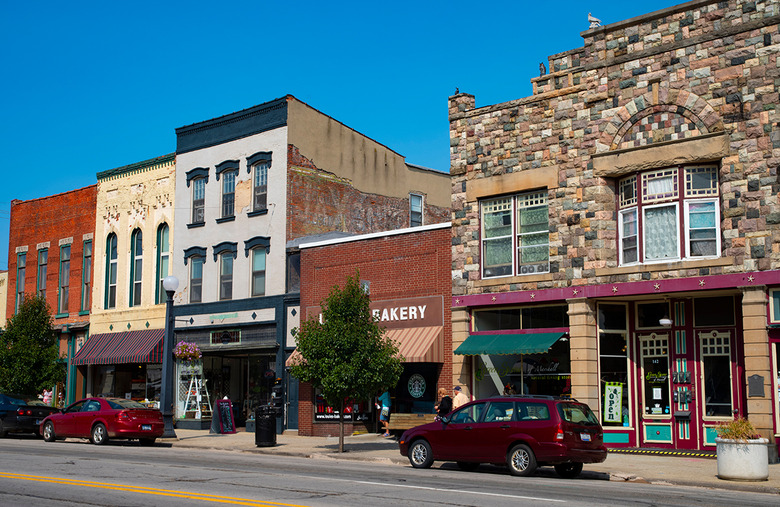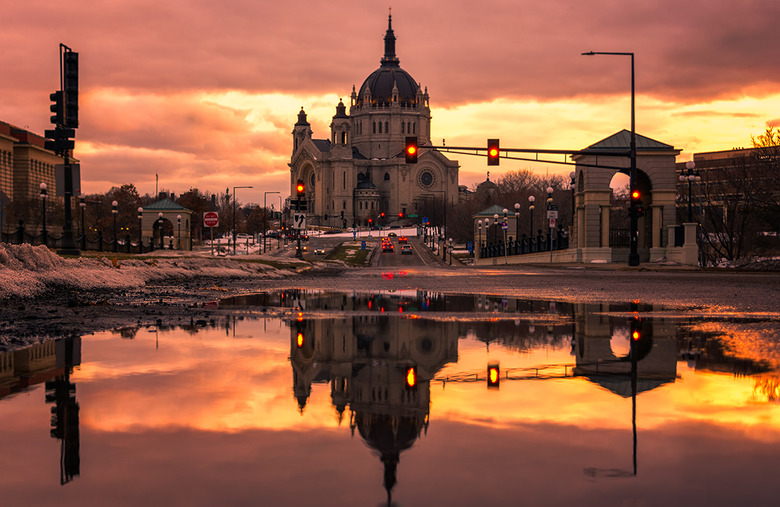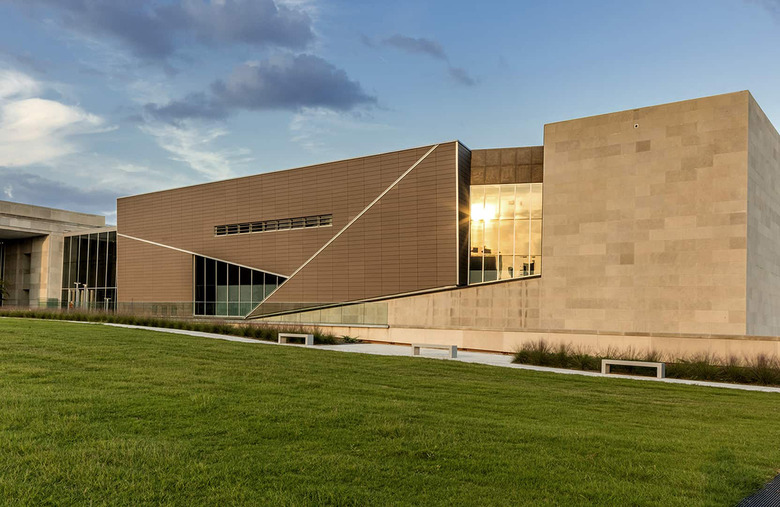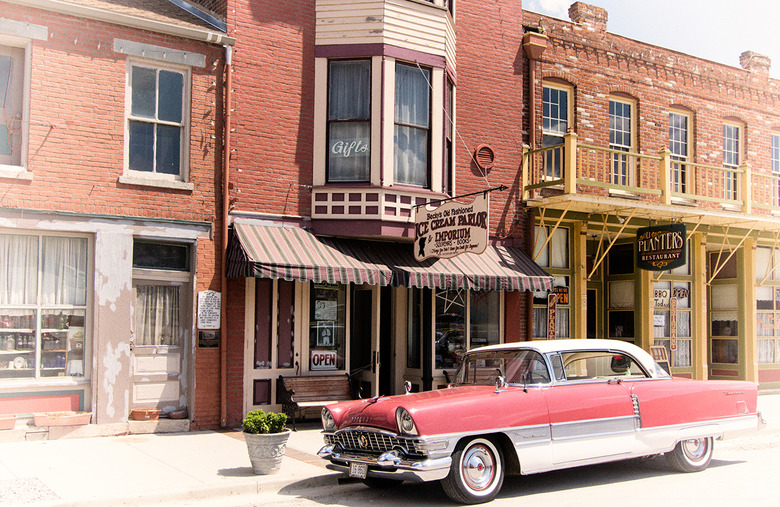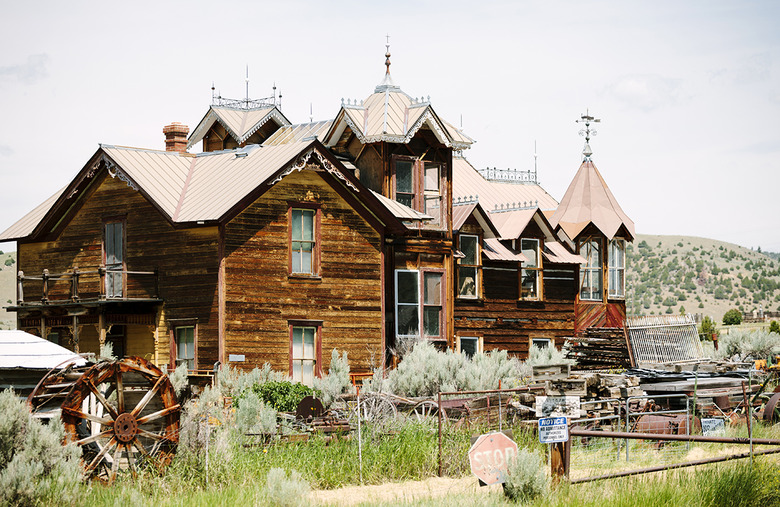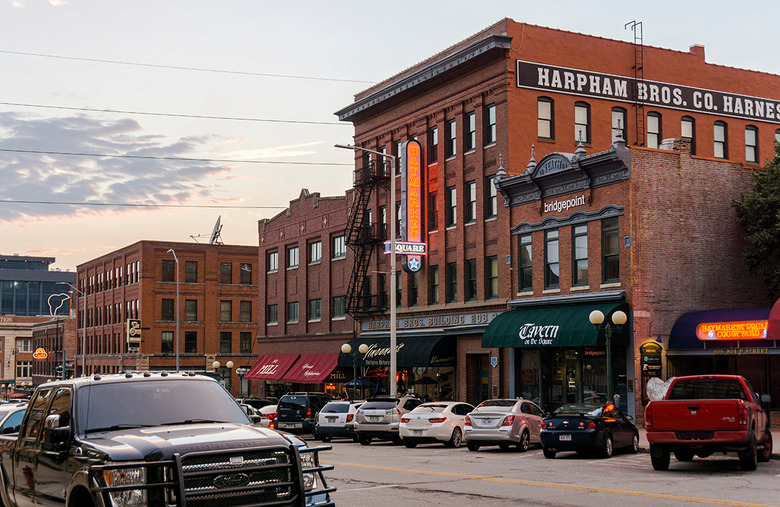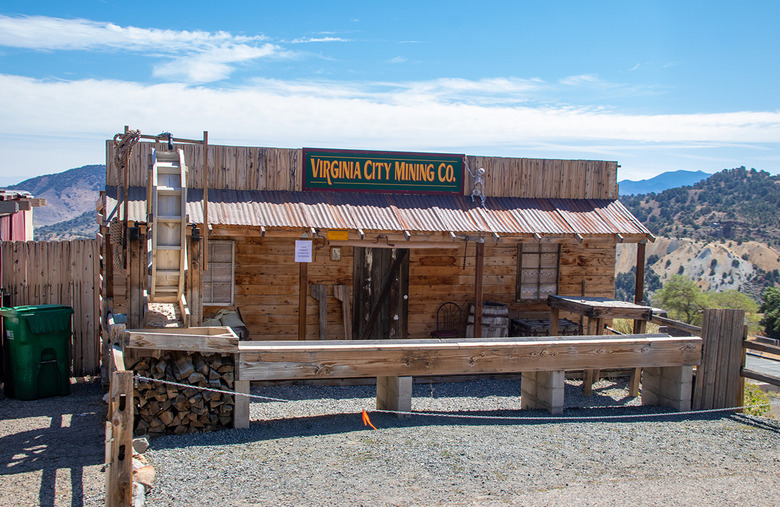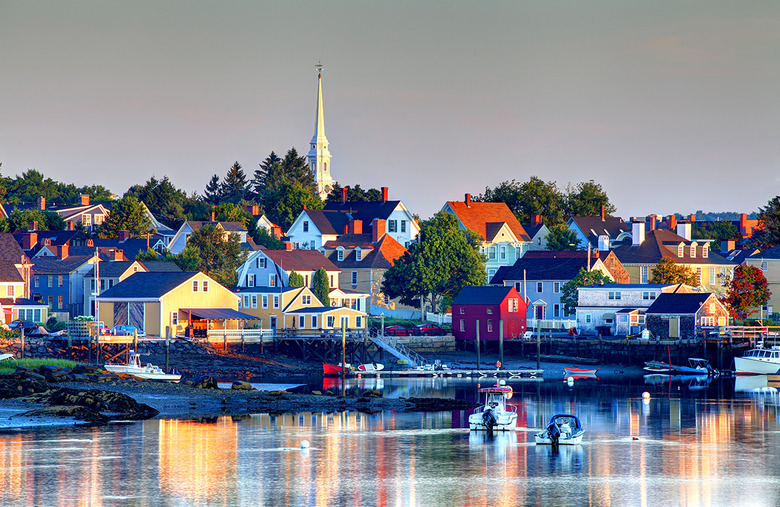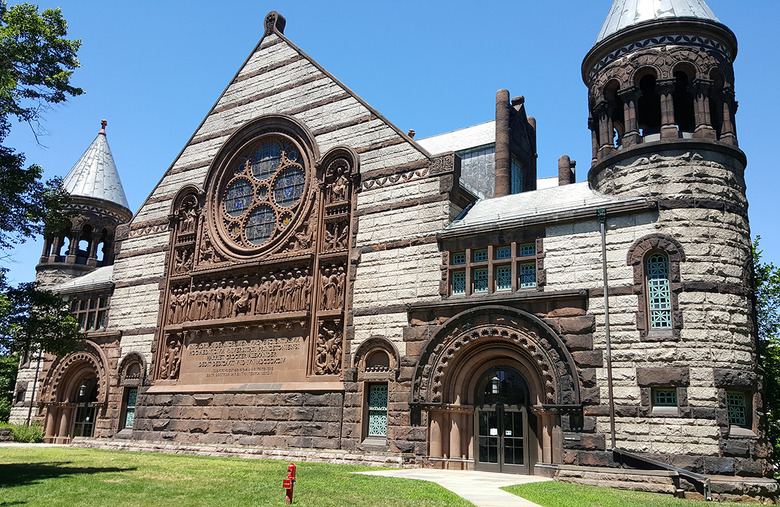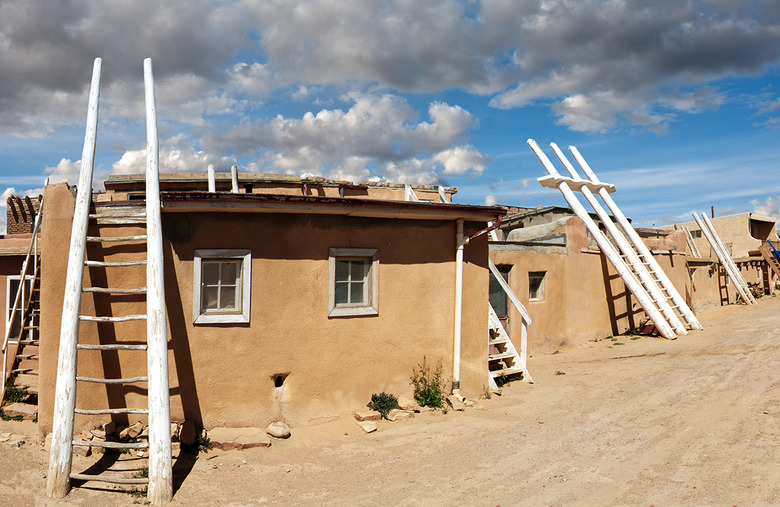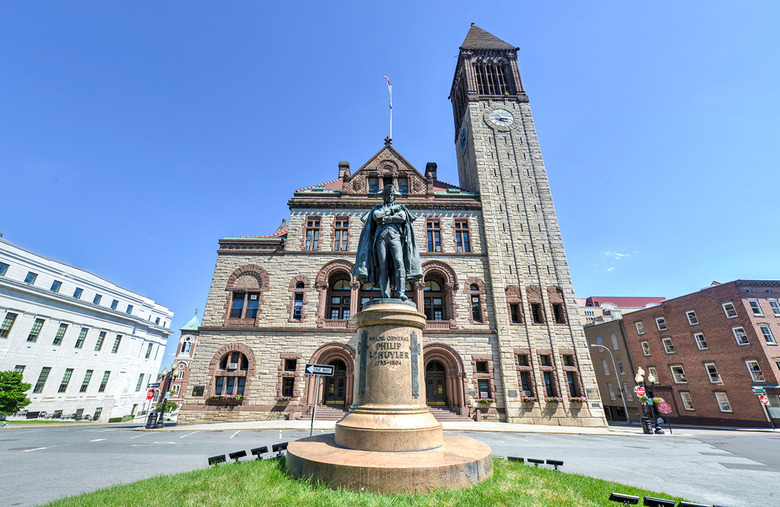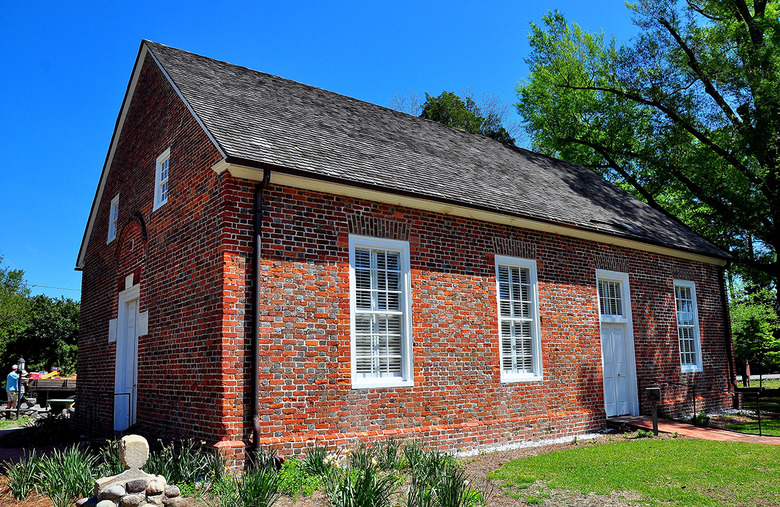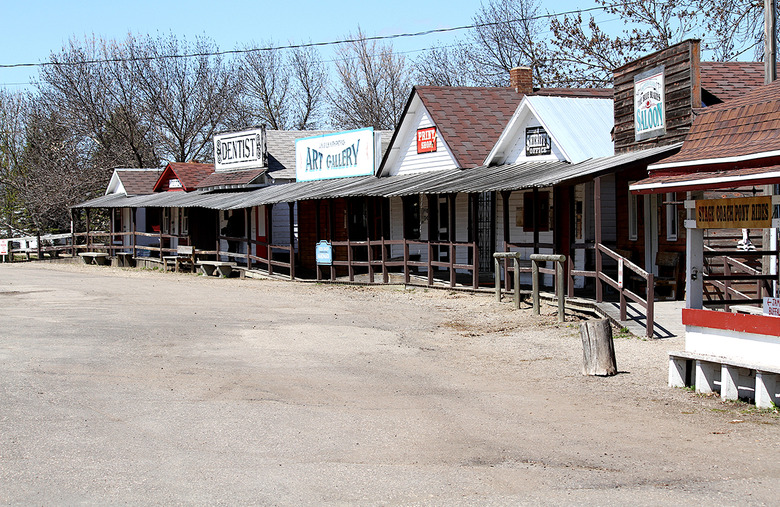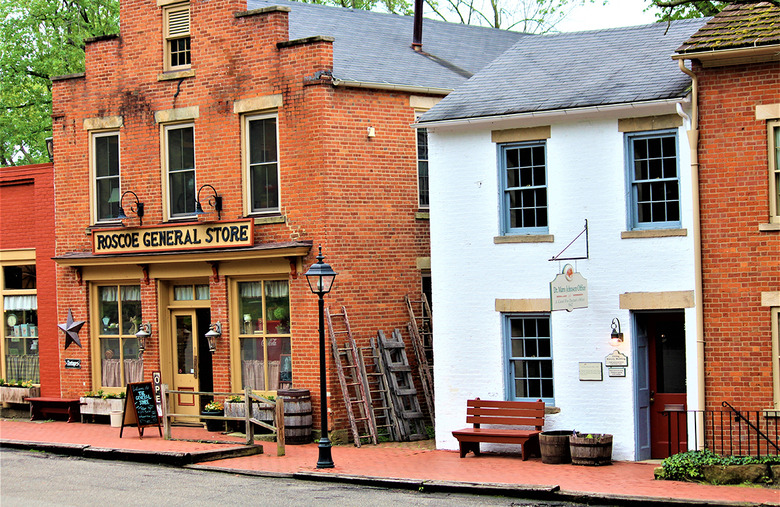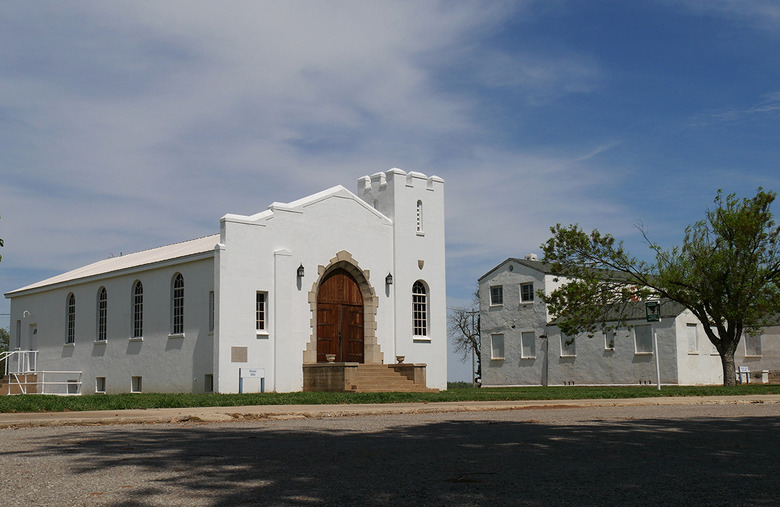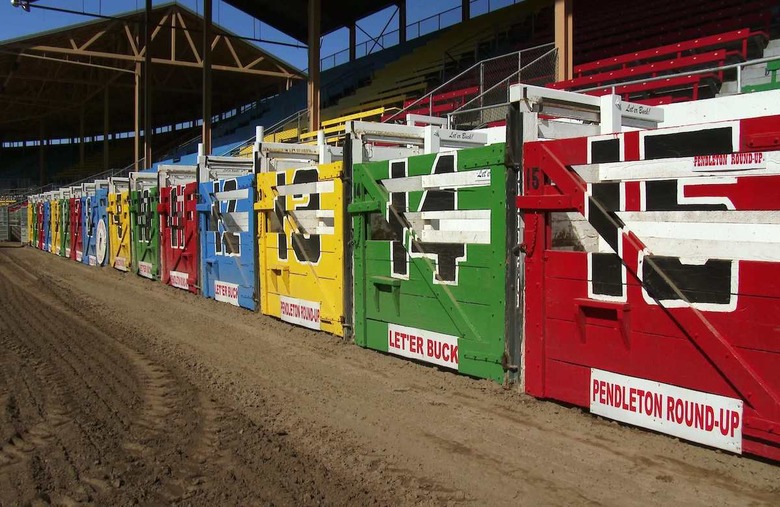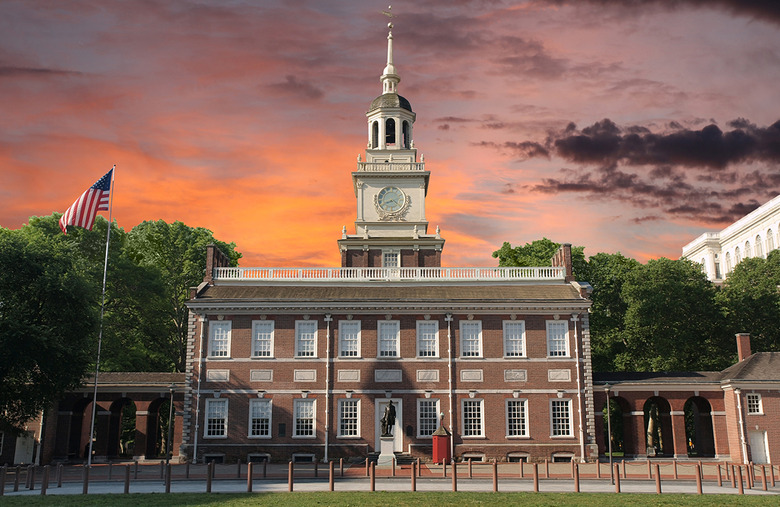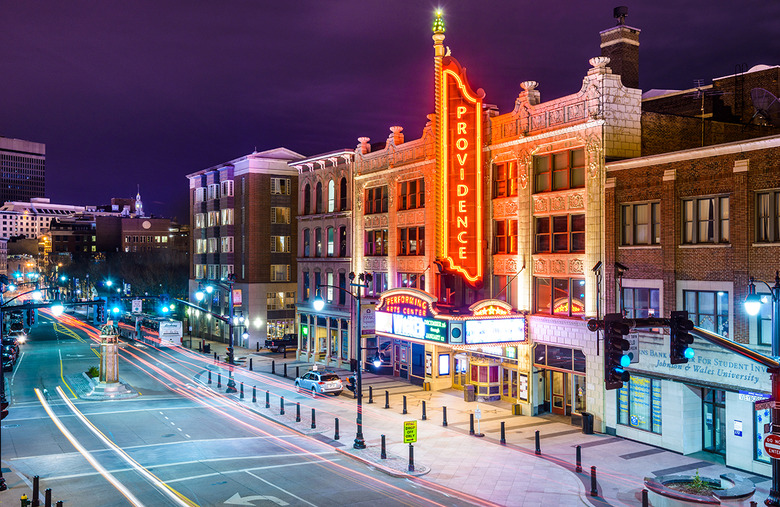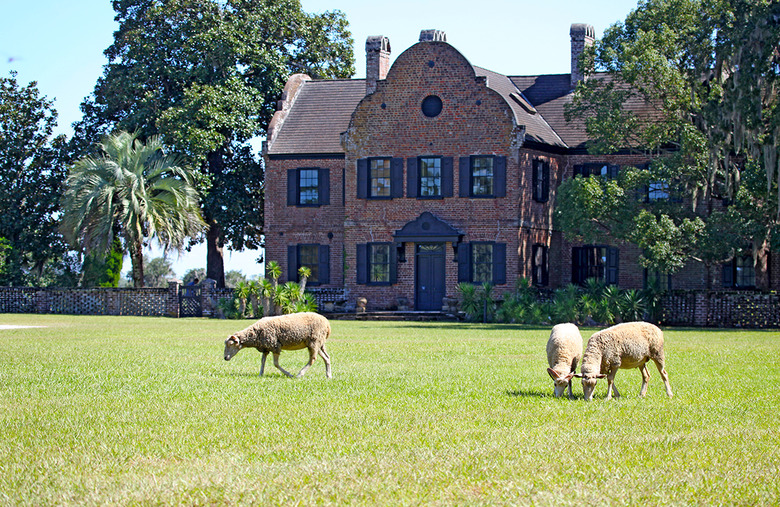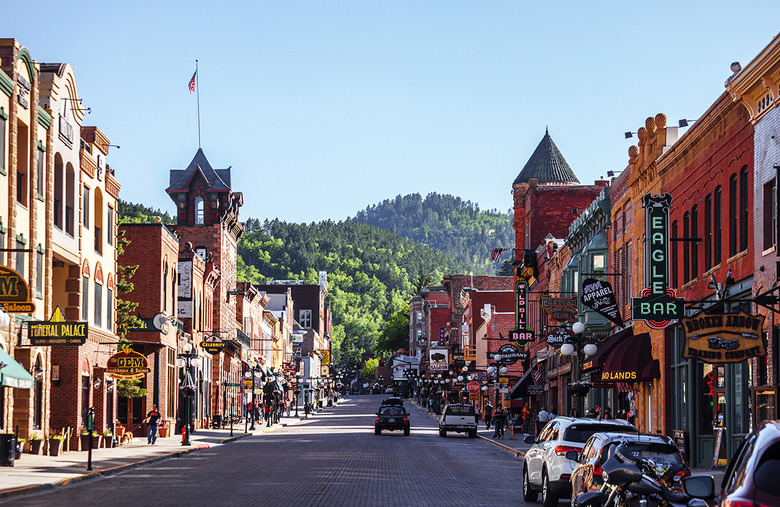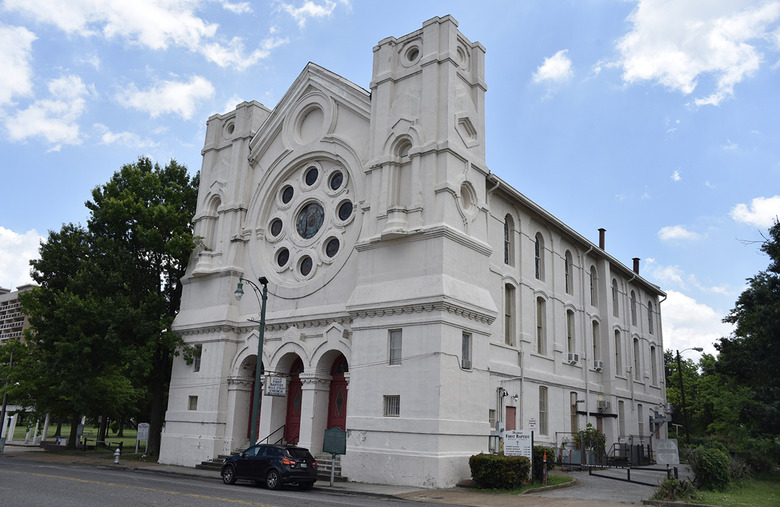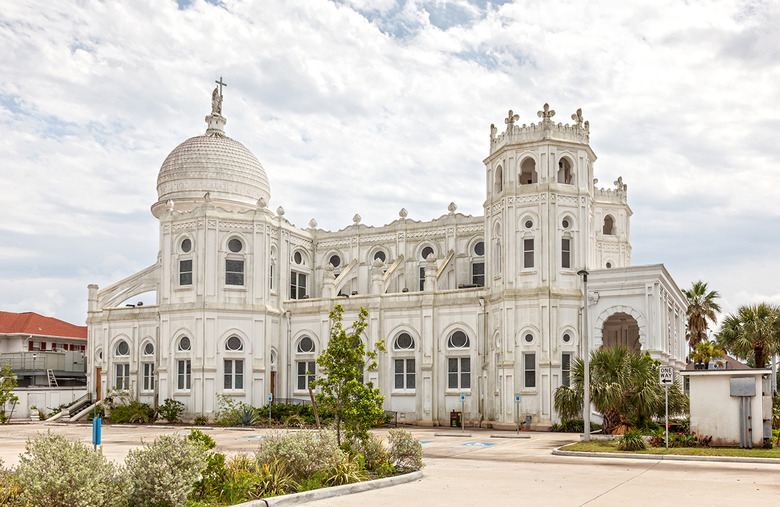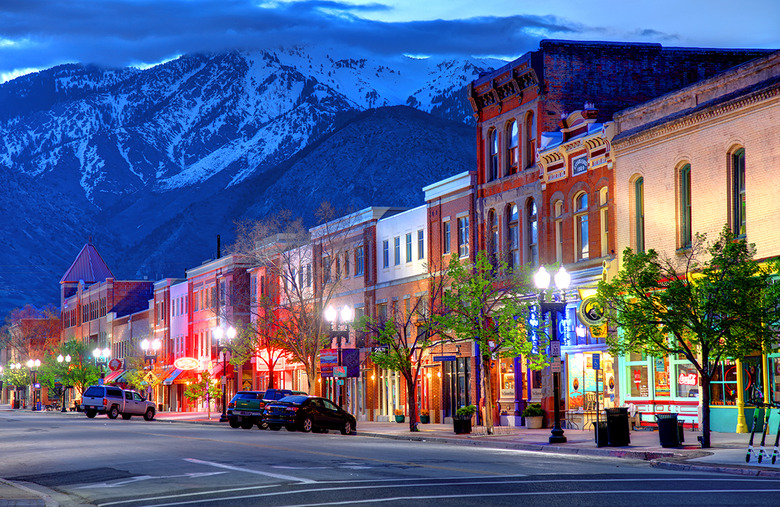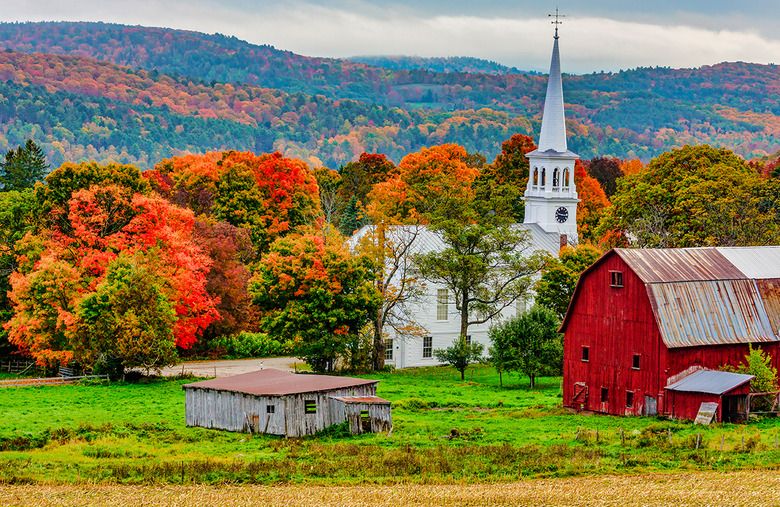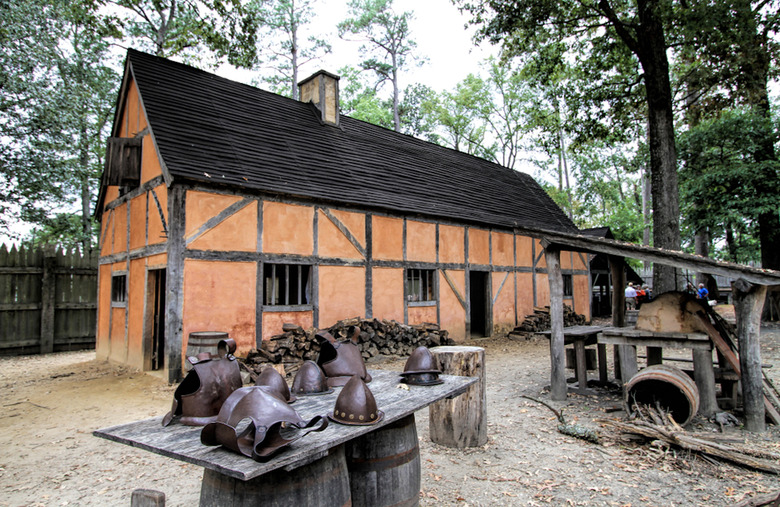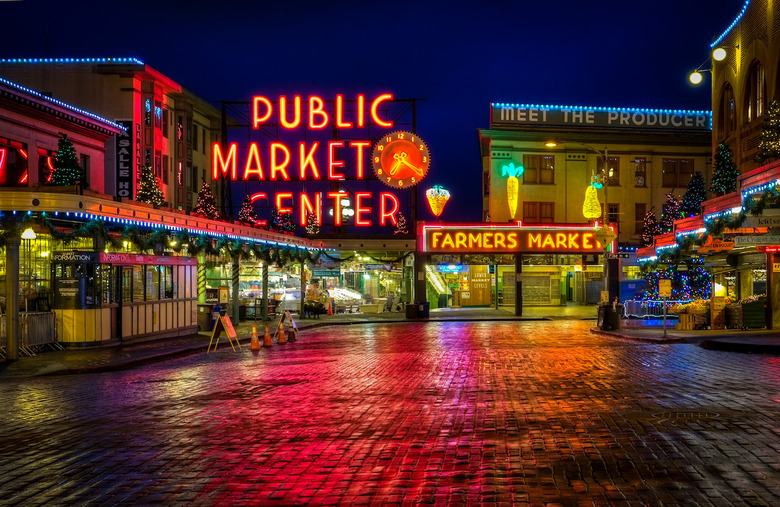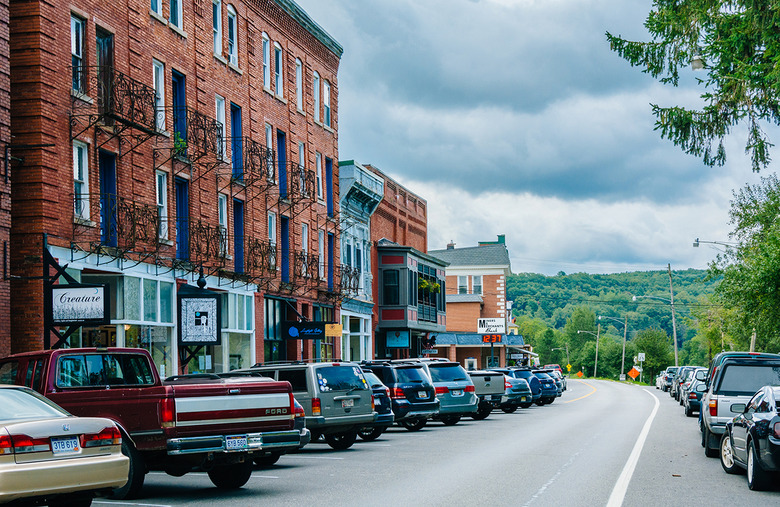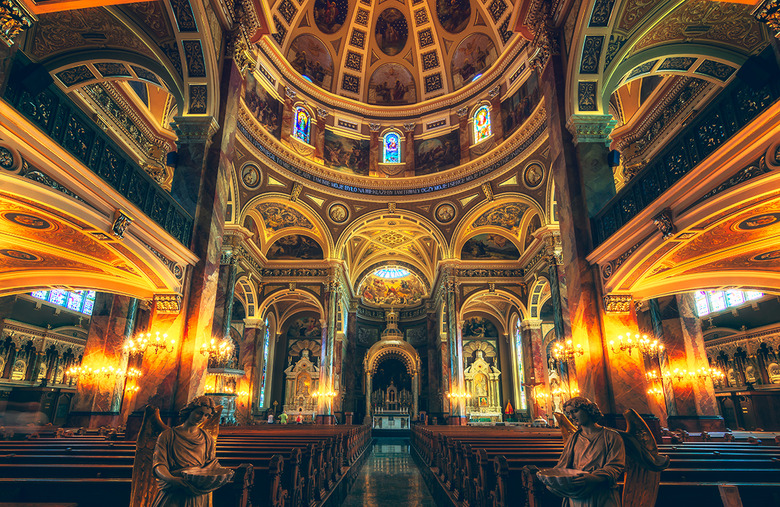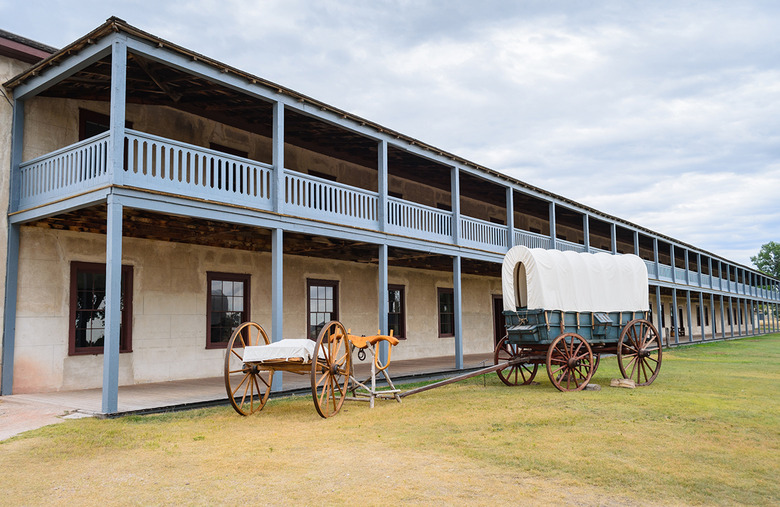Historic Towns In Every State
The best museums might work to tell the stories of individuals who defined a generation, wars that changed the state of the nation and landmarks rooted in history, but some towns are real-life walking museums with history on every corner. Old theaters, old-school boardwalks and famous landmarks explain how a place evolved to become how we know it today.
Every town in the nation has a story to tell, but some have a unique origin that distinguishes them from the rest. Here are the most historic towns in every state.
Methodology
To determine the most historic town in every state, we searched for towns with architecture listed as a National Historic Landmark, captivating stories of origin and structures that can be revisited today. We also considered towns that have been preserved as they once were when they were founded, recreate history daily with reenactments and tours, honor the individuals who defined history and are rich in cultural background.
Alabama: Mooresville
The oldest operational post office in the state, a brick church that has stood since 1839 and a 195-year-old inn and tavern are only a few of the famous landmarks that make Mooresville a town steeped in history. Historic homes and intact villages make Mooresville feel like a town that's stuck in time. Today, the entire town of Mooresville is listed on the National Register of Historic Places.
Alaska: Wrangell
Wrangell, home to one of the most underrated national parks in America, is a city in Alaska rich with history. Unlike any other city in the state, Wrangell has been owned by four nations — Tlingit, Russia, England and the United States — under three flags. Wrangell is the third oldest community in Alaska, and historic names like Old West lawman Wyatt Earp and conman Soapy Smith have stayed in the town.
Arizona: Tombstone
Fans of Western TV series and the cowboys who ruled the dirt roads will recognize Tombstone, Arizona, as one of the places home to the fictional characters. Incorporated in 1881, the underrated tourist destination is one of the last authentic western towns left in the U.S. Gunfight reenactments, themed shops and saloons — like the O.K. Corral, where one of America's most infamous gunfights took place — still stand in the town.
Arkansas: Little Rock
Little Rock, Arkansas, is a city pivotal in the fight for Civil Rights. Important African American landmarks document the location's history. The Little Rock Nine Monument — the first civil rights monument located on any state capitol grounds in the South — honors the nine African American students that bravely integrated the all-white Little Rock Central High School in 1957. And the Little Rock Central High School National Historic Site — which opened 50 years after the historic event — has interactive exhibits memorializing the day and the story of the Little Rock Nine.
California: Sonoma
Sonoma is a charming, small town in California with historic landmarks that exhibit the town's cultural roots. The Sonoma State Historic Park preserves the town's past with buildings like the Mission San Francisco Solano — a structure founded on July 4, 1823, that functioned as a church for young Native American converts — and the Blue Wing Inn — an adobe building that served as an inn and pub for visitors in 1836 and is now on the National Register of Historic Places. The Sonoma State Historic Park is the largest plaza of its kind in California.
Colorado: Silverton
One of the most scenic train rides in America can be found in the historic town of Silverton, Colorado. In the latter half of the 19th century, Silverton was a booming mining town where men moved with their families in hopes of striking gold and — you guessed it — silver. By 1883, Silverton had a population of 2,000 people, 29 saloons and a red light district — Notorious Blair Street. Mining eventually slowed and closed in Silverton in the early 1990s, but gold and silver still thrive in the town's mountains today. The Durango and Silverton Narrow Gauge Railroad Museum places tourists on a historic steam-powered locomotive and transports them through the wilderness once trekked by miners and cowboys.
Connecticut: Hartford
Hartford, Connecticut's capital, is one of the oldest cities in America. American writers like Harriet Beecher Stowe and Mark Twain once called Hartford home. The Mark Twain House and Museum, a historical mansion frozen in time, is a National Historic Landmark that honors the life and legacy of the writer. And the Butler-McCook House and Garden — Hartford's oldest home, which housed four generations of families for over 180 years — has colonial furniture, Victorian-era toys and a Victorian ornamental garden.
Delaware: New Castle
Cobblestone streets, noble townhomes and early colonial buildings combine to make New Castle feel like a blast from the past in the 21st century. Located in Delaware — nicknamed "The First State" — New Castle has surviving buildings from the 18th century. The Amstel House, constructed in the 1730s by the town's wealthiest landowner, is now a museum, and the New Castle Court House is where residents in 1776 declared independence from England.
Florida: St. Augustine
Dubbed the "Nation's Oldest City," St. Augustine is one of America's best coastal towns with more than 400 years of history. Founded in September 1565 by Spain, it is the longest continually inhabited European-founded city in the States. Most of St. Augustine's history is owed to the Spanish, African American and Native American individuals who built the city from the ground up. St. Augustine's history lives on in buildings, like the oldest masonry fort in the continental United States, the Castillo de San Marcos; the oldest wooden schoolhouse, an 18th-century building that once functioned as a school and a home; and the Lincolnville Museum and Cultural Center, the site of St. Augustine's first public African American school.
Georgia: Macon
Emerging from 1806 frontier Fort Hawkins, Macon, Georgia, was founded in 1823. However, the town's history began thousands of years before. Macon is home to the Ocmulgee Mounds National Historical Park, a prehistoric American Indian site that has been inhabited for 17,000 years. A museum honoring the people who lived on the lands contains more than 2,000 artifacts, and during September, the Ocmulgee Indian Celebration brings over 200 storytellers, dancers and craftsmen together for one of the largest Native American gatherings in the Southwest.
Hawaii: Lahaina
Lahaina is the coolest city in Hawaii and makes a case for also being the most historic. Lahaina, previously nicknamed "LeLe," or "relentless sun," was once the capital of the Hawaiian Kingdom in the early 19th century. Hawaiian kings and queens favored the sunny city and King Kamehameha I built the city's first Western-designed palace on city grounds. Since 1962, the Lahaina Historic District has been a National Historic Landmark, and many of the buildings that once hosted royalty are preserved and open.
Idaho: Silver City
Over 150 years ago, Silver City was a booming mining town. Crystallized gold and ruby silver could be plucked from the mountains and used to support the town's 300 homes and 75 businesses. But by 1942, the mountains once rich with gold were dried up and closed. Today, Silver City is one of the most breathtaking abandoned places on the planet. It is one of the best-preserved ghost towns in the nation and one of the few mining towns across America that hasn't been destroyed or commercialized.
Illinois: Galena
Galena is the prettiest town in Illinois and one of the state's most historic. Named after the rich mineral mined in the area, Galena became a town in 1826 and swelled in population as prospectors moved in hopes of striking lead. One of the oldest hotels in America — the DeSoto House Hotel — opened to house the surging population and still stands today. Galena's influx in visitors decreased as the California Gold Rush took hold, but 85% of the town's buildings are still intact today and in a National Register Historic District.
Indiana: Fort Wayne
Founded on Oct. 22, 1794, Fort Wayne is home to more than 225 years of history. Now the second-largest city in Indiana, Fort Wayne was founded by General Anthony Wayne after he constructed a fort under the authority of the states. Today, the days of yesteryear live on at Old Fort — an actual fort where demonstrations and reenactments recreate life in the early 1700s — and the Allen County Courthouse, a National Historic Landmark from the 19th century with exquisite glass art and must-see murals.
Iowa: Cedar Rapids
Cedar Rapids is Iowa's premier destination for history lovers. The Belmont Hill Victorian Bed and Breakfast, constructed in 1882 on a wooded hilltop, is a carriage house that still accommodates guests. The National Czech and Slovak Museum and Library located in the historic Czech Village neighborhood is another popular destination that celebrates Czech and Slovak history and culture with interactive exhibits and heritage programs. And the African American Museum of Iowa explores Iowa's involvement in work for civil rights before the start of the civil rights movement.
Kansas: Dodge City
A day in Dodge City, Kansas, is like stepping onto the set of a movie location you can actually visit. The history of Dodge City dates back to the 19th century when the Santa Fe Trail opened and allowed travelers by foot and wagon to enter the new area abundant with buffalo. During its early years, Dodge City was known as the "Wickedest Little City in the West" where no local law enforcement prevailed. Staged shootouts, colorful cattle towns and stagecoaches bring the days of the Wild West back to life, and the Boot Hill Museum — built on the grounds of the eponymous cemetery — offers a glimpse into the town's history with artifacts from days past.
Kentucky: Louisville
Louisville is best known for two things: the Kentucky Derby and Muhammad Ali, the most famous person from the state of Kentucky. But Louisville — founded in 1778 and named after King Louis XVI of France — is home to many historic landmarks and figures. Literary giant F. Scott Fitzgerald was a frequent visitor of the famous Seelbach Hotel, which makes an appearance in "The Great Gatsby"; the Louisville Slugger Museum & Factory highlights how the iconic bats are crafted in the city; and Ali, the legendary boxer and activist, is immortalized at the Muhammad Ali Center.
Louisiana: New Orleans
New Orleans is more than a trendy travel destination. The vibrant city is the birthplace of jazz, rich with the diverse history and traditions of many cultures, having been volleyed between both French and Spanish control. Most notably, the city is home to the annual celebration of Mardi Gras. In 2005, Hurricane Katrina, one of the worst hurricanes in U.S. history, flooded 80% of New Orleans, drastically damaging the city and forever changing lives. But with 302 years of history under its belt, New Orleans continues to define U.S. culture.
Maine: Augusta
Augusta is Maine's capital and one of America's top travel destinations. History can be reimagined at the Fort Western Living History Museum, a National Historic Landmark and the oldest surviving wooden French and Indian War era garrison in the nation, or in downtown Augusta, a historical district with shops reminiscent of the past.
Maryland: Baltimore
A visit to Baltimore is like stepping into a history book. The "Star-Spangled Banner," America's national anthem, was written at Fort McHenry, a city landmark, during the War of 1812. Frederick Douglass and Edgar Allan Poe, literary giants who once called the city home, are immortalized with museums honoring their lives. The National Great Blacks In Wax Museum, America's first wax museum of African American history and culture, towers in Baltimore and features history giants like Thurgood Marshall and Jackie Robinson.
Massachusetts: Salem
Salem is famous for the Salem witch trials of 1692, a time when courts persecuted 20 men and women for witchcraft. Today, Salem is known as one of the most haunted cities in North America due to its charged history.
Michigan: Marshall
Marshall, Michigan, has a myriad of historical architecture and some of the most beautiful homes in America. Designated a National Historic Landmark in 1991, the Marshall Historic District is described as a virtual encyclopedia of America's most popular architectural styles in the 19th and early 20th century. Gothic Revival, Beaux-Arts Classical and Queen Ann are only a few popularized styles. Marshall was also a station on the Underground Railroad. History can be revisited at the National House Inn, a destination believed to have housed those fleeing slavery.
Minnesota: Saint Paul
Saint Paul, Minnesota, has a history that dates back to 1849 when it was named the capital of the Minnesota Territory. The city is most known for its Victorian architecture and the stunning Cathedral of Saint Paul, which dominates the city's skyline. Free online virtual tours of the cathedral are available for history lovers.
Mississippi: Jackson
Dubbed "The Birthplace of American Music," Jackson, Mississippi, is home to historical markers that celebrate the city's influence in blues, the civil rights movement and Southern culture. The famous Mississippi Civil Rights Museum is a Jackson staple that features eight interactive galleries that display the systematic oppression of Black Mississippians as they fought for equality. The Jackson Blues and Civil Rights Trail tells the story of blues heritage and how it influenced the civil rights movement and the world to come. The home of Medgar Evers — the first NAACP field secretary and civil rights activist who was assassinated outside of his home in 1963 — is a National Historic Landmark and a museum in the city.
Missouri: Hannibal
Hannibal, Missouri, was the boyhood home of American writer Mark Twain and served as the source for his novels to come. His home is now a National Historic Landmark that has stood for more than 100 years. Most notably, Hannibal is home to only one museum: Jim Journey's Freedom Center. The museum is dedicated to the life of Daniel Quarles, the man who inspired the character Jim in "Adventures of Huckleberry Finn."
Montana: Virginia City
The Old West lives on in Virginia City, Montana. The city is a ghost town 20 miles west of Yellowstone National Park, a popular American bucket list destination. Frozen in time, Virginia City was once a bustling mining town rich in gold in the late 19th century. When the gold ran out, the population fizzled, but the buildings remained.
Nebraska: Lincoln
Lincoln, Nebraska's capital and one of the most caring cities in America, is named after the 16th president of the U.S. However, the city is most famous for the Historic Haymarket District — named after the city's original market square in 1867 and reimagined with antique shops, art galleries and restored warehouses.
Nevada: Virginia City
Virginia City is one of the most chilling places in America. In 1859, miners struck gold in nearby Storey County, leading to miners across the nation making their way to the city in hopes of discovering fortunes. The spike in population led to brawls and Wild West shootings that, in turn, led to the city being considered haunted. The city honors its past with saloons and the Virginia and Truckee Railroad, one of the most famous railways in the West.
New Hampshire: Portsmouth
Portsmouth, New Hampshire, was once a town where, in the 1600s, merchant ships traveled up and down the river. Today, it is described as "one of the most culturally rich destinations in the country" with historic homes straight from the history books.
New Jersey: Princeton
Along with being home to one of the most beautiful college campuses in America, the town of Princeton, New Jersey, has a rich history dating back to 1675, more than 100 years before the birth of America. In fact, Princeton played several roles in the Revolutionary War and was even the first capital of the new nation following the Treaty of Paris. The county has many preserved and restored sites, including the wartime headquarters of George Washington.
New Mexico: Acoma Pueblo
The preserved pueblos of New Mexico are some of the most amazing man-made marvels in America. There are many different sites to explore across the state, but Acoma Pueblo, located west of Albuquerque, is the oldest continuously inhabited community in the United States. Today, about 50 tribal members live in the pueblo, also known as Sky City, and Native Acoma guides conduct tours for visitors.
New York: Albany
Dating back to the early 1600s, Albany, New York, was first a Dutch settlement before it was ceded to the British. After American independence, it became the state capital in 1797. The town features a mix of modern architecture and historic buildings, including the 19th-century capitol building, the 18th-century Schuyler Mansion and the SUNY System Administration Building, which resembles a fantastical castle.
North Carolina: Bath
Bath, North Carolina's first town, was founded in 1705. Today, its original town limits encompass a historic district that includes restored homes and a church as well as exhibits and walking tours dedicated to Bath's history and culture.
North Dakota: Jamestown
Jamestown, Virginia, is a destination that attracts many American history buffs, but there's another Jamestown 1,500 miles away that also has a rich history. Jamestown, North Dakota, is home to the Fort Seward Military Post as well as the sacred white buffalo and buffalo herd, the National Buffalo Museum and the World's Largest Buffalo, one of the many cool roadside attractions across America.
Ohio: Roscoe Village
Roscoe Village in Coshocton, Ohio, is a restored 1830s port town that feels like stepping back in time. Ride on a horse-drawn canal boat, experience shops where crafters create handmade items using historical techniques or even take a class to learn classic crafts from the 19th century.
Oklahoma: El Reno
Cruising down Route 66 is the ultimate road trip for many Americans. One stop to make along the way is in El Reno, Oklahoma, a historic small town located at the crossroads of Route 66 and the Chisholm Trail. Along with vintage neon signs and businesses downtown, El Reno is also home to Fort Reno, a military fort established in 1875. It has 15 buildings listed on the National Register of Historic Places.
Oregon: Pendleton
Oregon is home to plenty of natural beauty as well as intriguing historic towns such as Pendleton, which has something for everyone. The Round-Up and Happy Canyon Hall of Fame Museum celebrates the city's cowboys and Western history, while the Heritage Station Museum spotlights the struggles faced by early settlers, and the Tamastslikt Cultural Institute details the impact of the Oregon Trail on Indigenous tribes.
Pennsylvania: Philadelphia
Philadelphia is known for some of the most popular tourist attractions in the country, many of which are in Independence National Historical Park. Known as the "most historic square mile in America," the park includes Independence Hall, where the Declaration of Independence was signed, as well as the iconic Liberty Bell.
Rhode Island: Providence
Providence, Rhode Island, was founded by preacher Roger Williams in 1636 after he fled Massachusetts and started a new settlement on land he purchased from the Narragansett people. The city became a bustling seaport and local merchants were able to build ornate homes, such as the 18th-century John Brown House and the Victorian Lippitt House, both preserved homes and museums. Nearby Newport is also famous for its Gilded Age mansions and for Touro Synagogue, the oldest synagogue in the U.S.
South Carolina: Charleston
Established by English colonists in 1670, Charlestown (the "w" was dropped in 1783) was an early commercial center of trade. A strategic military post, Charleston's Fort Moultrie repelled British forces during the American Revolution and Fort Sumter saw the first shot fired in the Civil War.
South Dakota: Deadwood
Deadwood, South Dakota, was the inspiration behind the HBO show of the same name, and while the town almost went the route of an Old West ghost town, it's still very much alive. The gold rush town, which hosted famed gunslingers such as Calamity Jane and Wild Bill Hickok, has many museums, artifacts and tours commemorating its colorful history. It's also a great base camp for exploring stunning hiking trails throughout the Black Hills region of South Dakota.
Tennessee: Memphis
Tennessee is known for its rich musical history, and Memphis is a can't-miss stop for music lovers. Located along the Blues Highway, Memphis is home to the famed Beale Street, where icons like B.B. King rose to fame; Sun Records, where Elvis Presley, Johnny Cash and more got their start; and the Memphis Rock 'n' Soul Museum. Other iconic attractions include Graceland and the National Civil Rights Museum, located where civil rights leader Martin Luther King Jr. was assassinated.
Texas: Galveston
Everything's bigger in Texas, including preservation of the state's history. While many Americans might remember the Alamo in San Antonio, the beautiful coastal city of Galveston is an underrated city with plenty of fascinating history. Despite experiencing one of the most devastating hurricanes in American history, Galveston is home to beautiful historic preserved homes. It was also the site of the first Juneteenth celebration and has many important African American landmarks.
Utah: Ogden
In the late 1800s, Ogden, Utah, became a Western boomtown filled with intrigue and colorful characters. Today, it's both an underrated skiing destination and a cool historic spot thanks to its three-block Historic 25th Street district. Though no longer a train depot, Union Station remains as a testament to the city's railroad history. The station now houses multiple museums, including the Utah State Railroad Museum and Eccles Rail Center, which are also home to two of the largest locomotives ever manufactured.
Vermont: Woodstock
On top of being one of the best American towns to see vibrant fall colors, Woodstock makes for a wonderful weekend destination thanks to its history and vintage charm. Chartered in 1761, Woodstock became a hub for craftsmen. Today, visitors can still find glassblowers, cheesemakers and many other local artisans. Vermont's rural heritage is on display at Billings Farm & Museum, complete with an 1890 farmhouse. Also in Woodstock, the Marsh-Billings-Rockefeller National Historical Park — Vermont's only national park — preserves both a beautiful historic mansion as well as the surrounding forests.
Virginia: Jamestown
In 1607, Jamestown, Virginia, became the first permanent English settlement in North America. More than 400 years later, Jamestown is a historic site preserved by the National Park Service with living history exhibits recreating what life was like in the Jamestown colony as well as in a Powhatan village.
Washington: Seattle
Washington's largest city, Seattle is known for technology and sleek structures like the Space Needle, but there are plenty of historical sites to explore. One of the most popular tourist spots in America, Pike's Place Market is actually one of the oldest continually operating farmers markets in the country. Seattle also has eight preserved historic districts, including Pioneer Square, the city's first neighborhood. Learn about the area's history at the Seattle arm of the Klondike Gold Rush National Historical Park or at the Museum of History and Industry.
West Virginia: Thomas
The beautiful mountain town of Thomas, West Virginia, was founded around coal mining in the 1880s, and that heritage can still be felt today thanks to its more than 50 preserved homes and sites on the National Historic Register. Thomas has a vibrant Appalachian artists community with galleries and music venues on historic Front Street.
Wisconsin: Milwaukee
Milwaukee takes its name from the language of local Native American tribes who inhabited the area before Europeans arrived in Wisconsin. The city has many festivals celebrating its cultural history and diversity as well as historic buildings, including the 14th-century St. Joan of Arc Chapel on the campus of Marquette University, an amazing place of worship and the oldest church in the U.S. Other architectural highlights include multiple homes designed by Wisconsin native Frank Lloyd Wright and the Basilica of St. Josaphat.
Wyoming: Fort Laramie
Many visitors flock to Wyoming to explore one of the most popular national parks in America, but the Cowboy State has plenty of amazing cities to see as well, including Fort Laramie and the Fort Laramie National Historic Site. Originally established in 1834 as a fur trading post, the fort was a stop along the Pony Express. It has been preserved by the national park system, which offers staff-guided or self-guided tours. For those looking to explore historical sites from the comfort of their own home, there are amazing virtual tours of landmarks, museums and more across the country.
